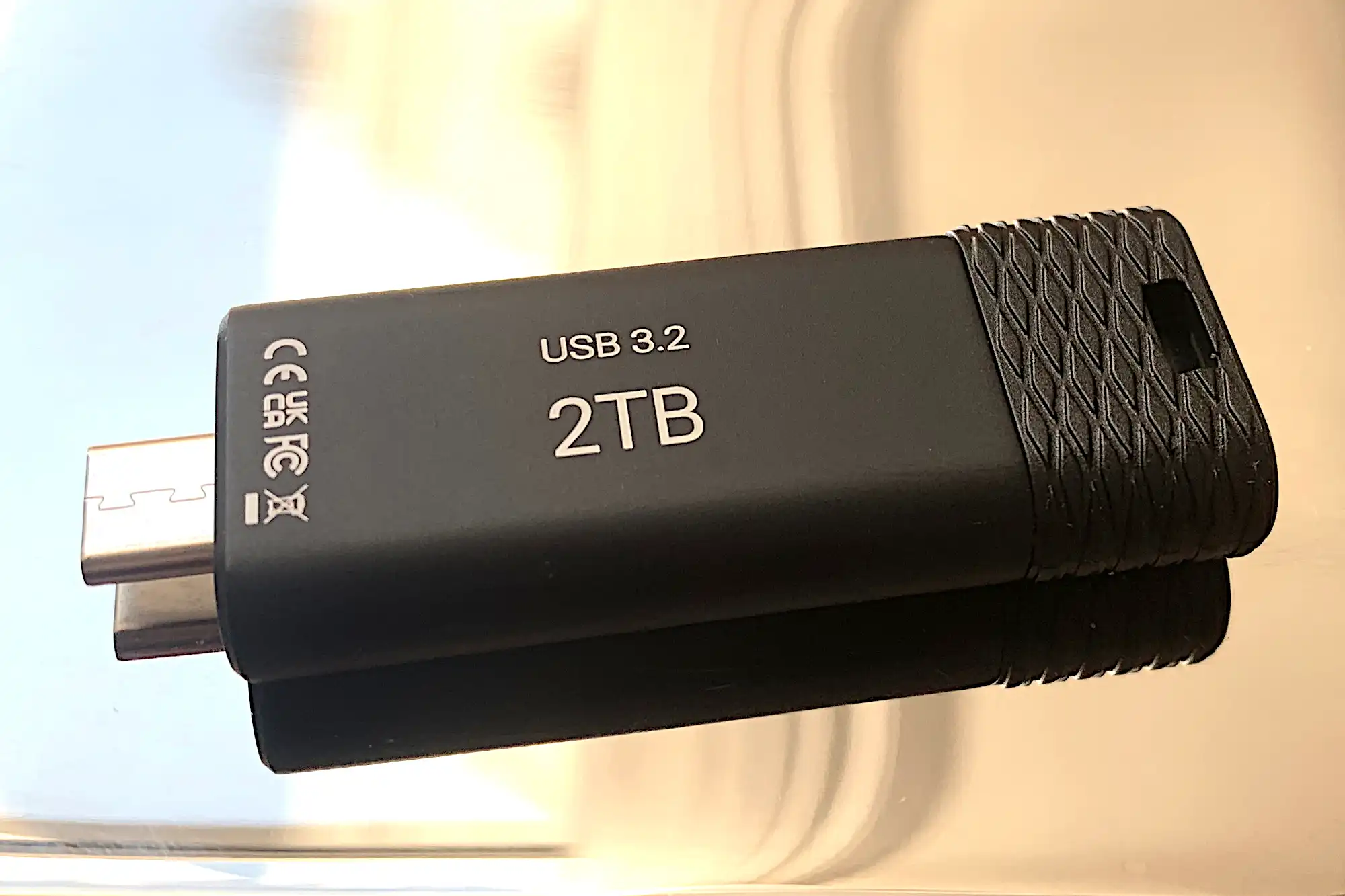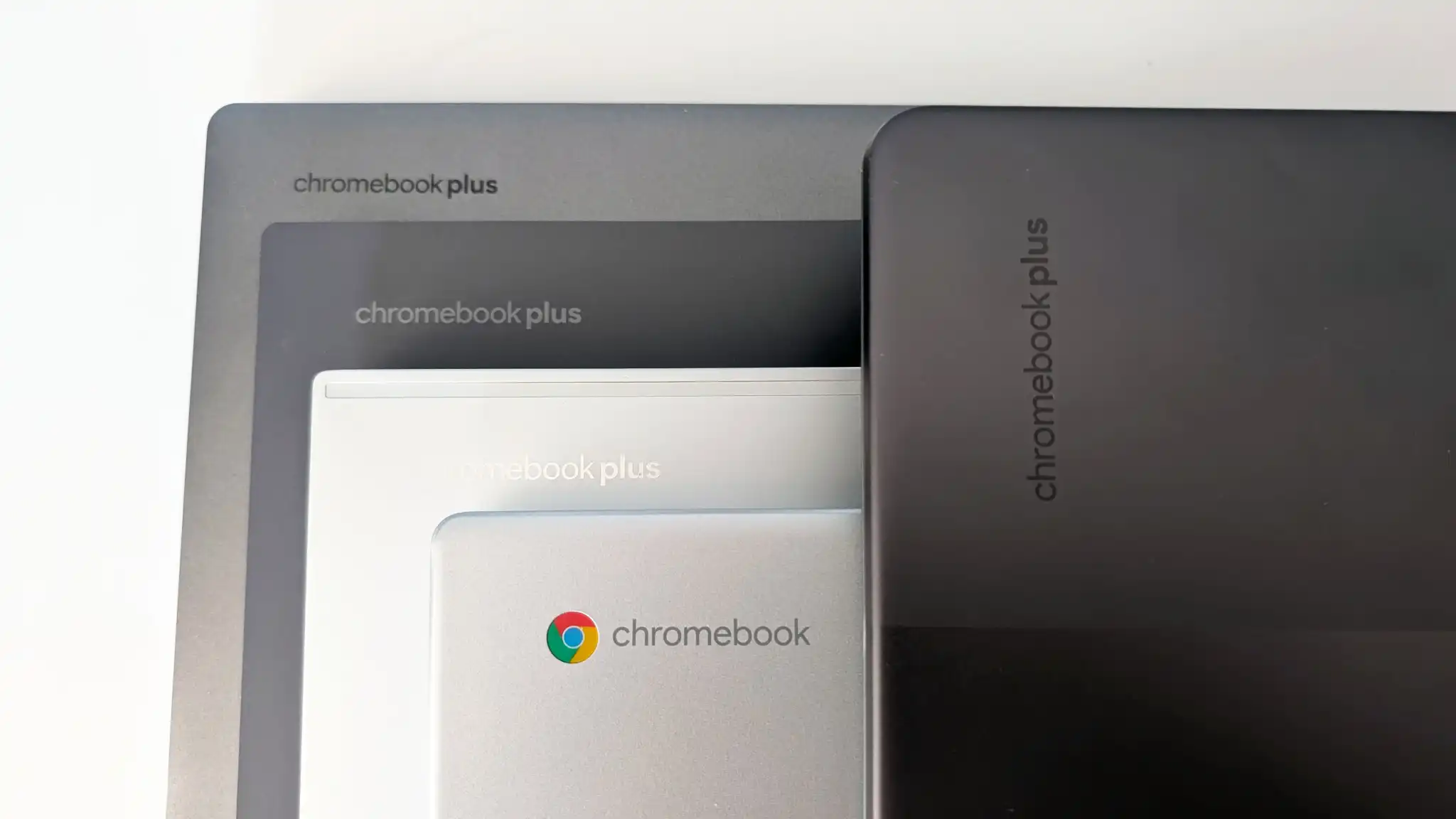This small 10Gbps, Type-C USB stick is fast, but it’s the clever, retracting physical design and svelte form-factor that grabbed my attention.
USB sticks are no longer the slowish commodity item they once were. Utilizing the fast 10Gbps USB 3.2 protocol, Type-C connectors, and NVMe internals they’re now more akin to what we call external SSDs than those dime-a-dozen thumb drives of the past.
While not the fastest (it’s still fast) such beastie I’ve tested, the PNY Pro Elite V3’s elegant retractable design and uber-small form-factor won me over. At least for everyday workloads — it’s not the best for super-large file transfers.
Read on to learn more, then see our roundup of the best external drives for comparison.
What are the PNY Pro Elite V3’s features?
The Pro Elite V3 is a diminutive 10Gbps USB thumb drive that’s approximately 2.5-inches long, 0.75-inches wide, and 0.4-inches thick. It’s a two-part affair.
The main body marries the grippy, textured headpiece (with a lanyard attachment point) and the Type-C connector. A rather beefy, captive sleeve slides away from the headpiece to cover/protect the Type-C connector, and slides towards that headpiece to reveal it for use.
Unlike many retractable designs, where a switch, lever, or some such is used to push the connector out of the main body of the device, the one-piece Pro Elite V3 isn’t finicky torture to insert. We like it.

Also, the protective sleeve being captive means there’s nothing to lose or keep track of other than the drive itself. If it seems like I’m a bit aglow over the Pro Elite V3’s design, it’s because of the many oaths I’ve uttered over the years due to ill-conceived retractable mechanisms and lost thumb drive caps.
Though I’m not privy to the actual controller/bridge chip, the internals of the Pro Elite V3 are obviously NVMe — the drive’s performance exceeds anything SATA is capable of. Also, the way the drive slowed to 280MBps during the 450GB write test reminds us of some older TLC.
That said, 280MBps is a bit faster than the 75MBps to 150MBps write rates we typically see with QLC written natively, i.e. without write-as-SLC secondary caching.
PNY warranties the drive for two years, but it’s a limited promise. We’re guessing the usual qualifications abrogate it: severe physical damage or too much data written. PNY declined to provide a flat-out TBW (terabytes that may be written) rating, but generally, this rating is anywhere from 250TBW per TB of capacity for QLC to 600TBW for TLC.
Note that most people don’t write nearly as much data as they think they do — the Pro Elite V3 should give you have a long and productive lifespan.
How much is the PNY Pro Elite V3?
The PNY Pro Elite V3 is available in 256GB, 512GB, 1TB, and 2TB (tested) capacities for $32, $53, $84, and $152, respectively. That’s 12 cents, 10 cents, 8.4 cents, and 7.6 cents per gigabyte — not a huge spread as far as these things go.
Compared to the like-performing competition you’ll see listed in the charts, pricing is pretty much a wash — i.e., they’re all priced similarly.
How fast is the PNY Pro Elite V3?
While performance is not quite on par overall with the SK Hynix’s Tube T31 or Seagate’s Ultra Compact SSD, the PNY Pro Elite V3 is close and turned in very good numbers. Far better than its V2 predecessor.
Note that the Teamgroup X1 Max actually performed far better when we limited CrystalDiskMark 8’s data set to 16GiB. However, our standard calls for the 64GiB tests so that’s what the X1 Max was stuck with — like all the other drives in the charts. Also, the PNY Pro Elite V2 was a 256GB drive, and therefore unable to participate in the 450GB.
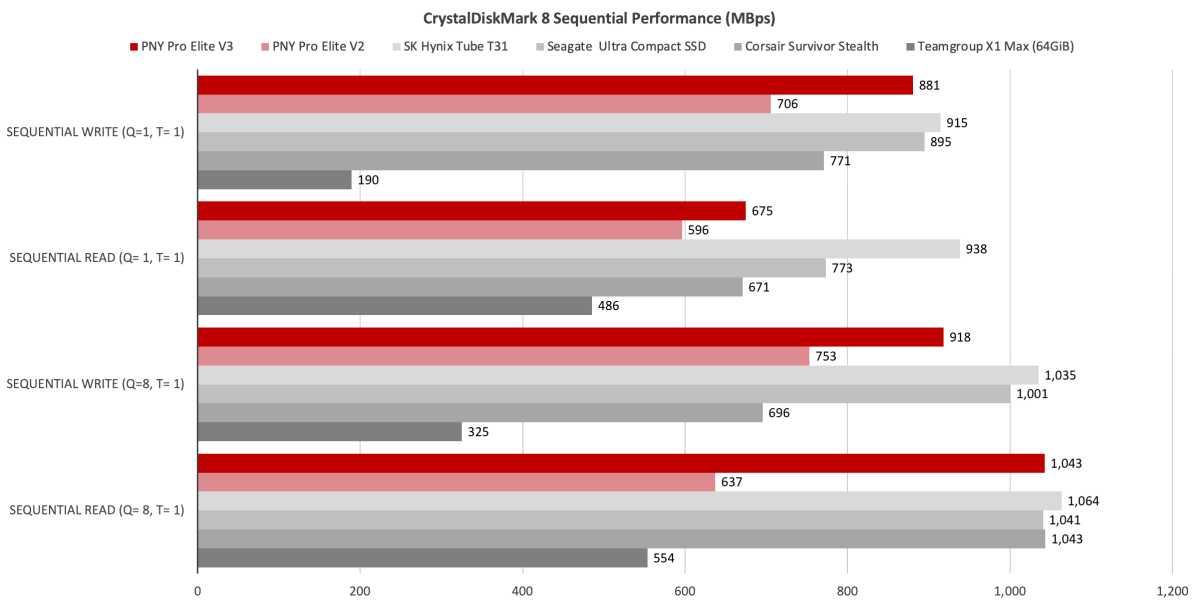
The PNY Pro Elite V3 was again a bit slower than its two top competitors in CrystalDiskMark 8’s random 4K tests.
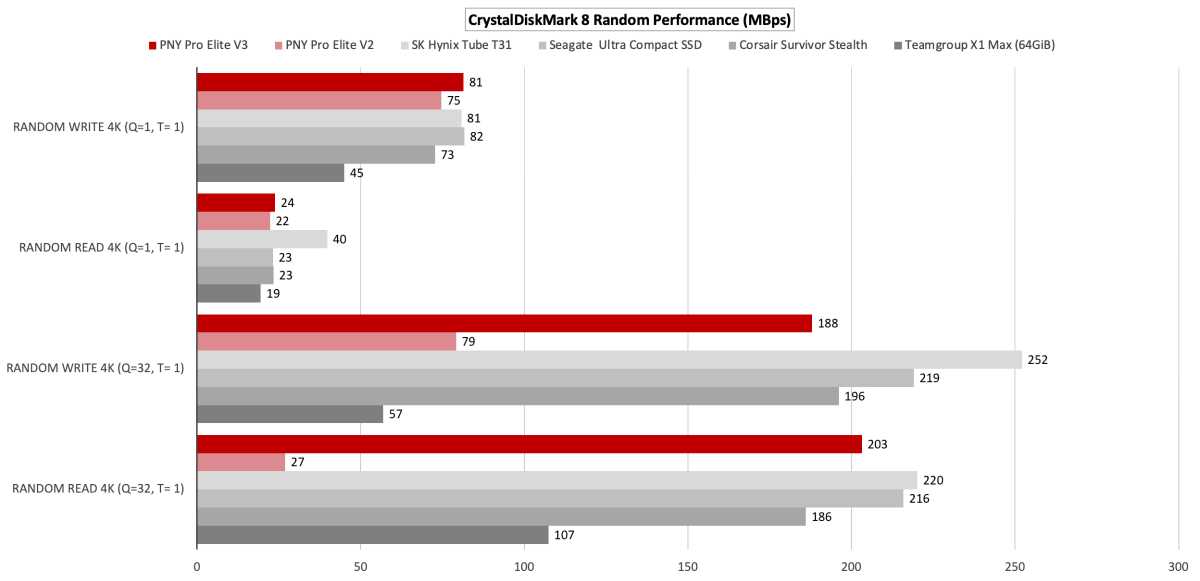
Again, while the PNY Pro Elite V3 is fast, it wasn’t quite as fast as the Tube T31 or Ultra Compact SSD in our 48GB transfer tests.
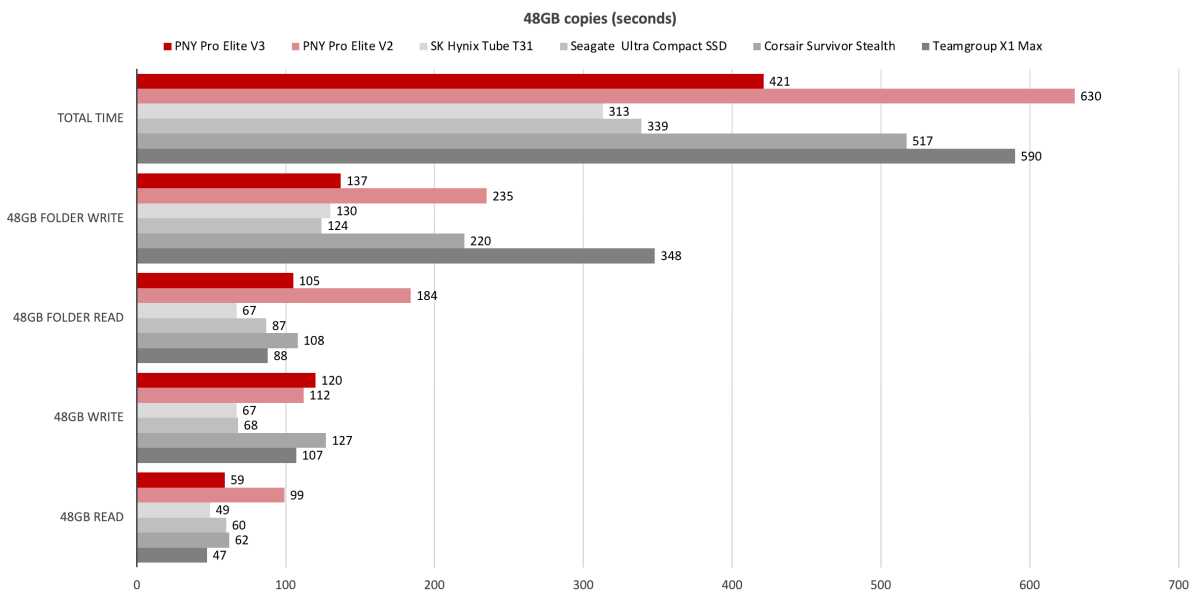
The PNY Pro Elite V3 really fell off the pace in the 450GB write, barely edging out the Corsair Survivor Stealth which is more about weather resistance than performance. Again, the Pro Elite V2 was only 256GB and unable to store a 450GB file — hence the absence of a time.
ESR’s renowned cases are already available for the iPhone 16e!
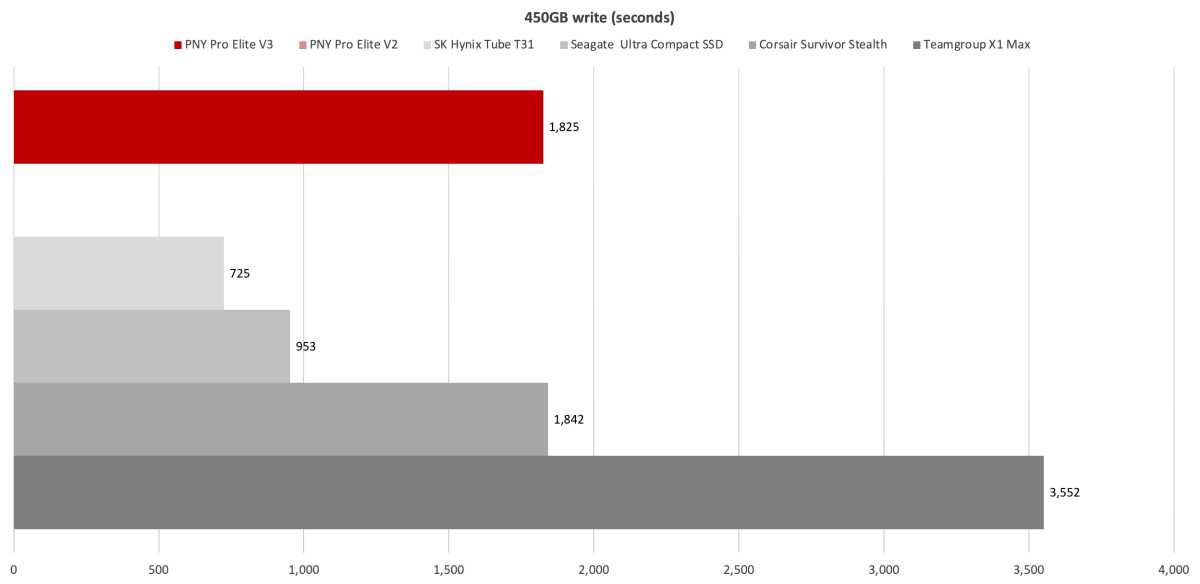
Below you can see the slowdown as the PNY Pro Elite V3 ran out of secondary cache in fairly short order during our 450GB write test. This native write speed likely means older TLC or some sort of new, faster QLC. Modern TLC NAND triple this native write rate, while all the QLC we’ve tested is around 100MBps or more slower.
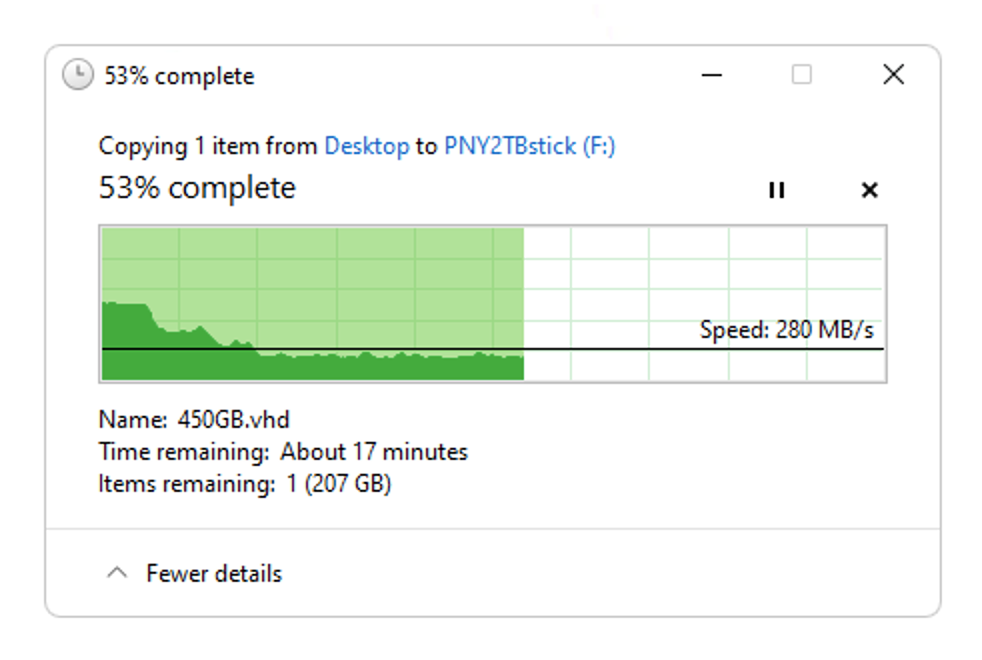
While not quite the fastest of the 10Gbps USB stick litter, the Pro Elite V3 is plenty fast enough for everyday tasks.
Should you buy the PNY Pro Elite V3?
The PNY Pro Elite V3 is third in line with the already discussed competitors offering around 10 percent more speed overall and far better large-file performance. However, the PNY Pro Elite V3’s svelte, super-convenient design makes it the one we’d most likely throw in a pocket for normal, everyday chores.
When shopping, as you can tell from the charts above… Make very sure you’re buying and receiving V3, not the far slower V2.

